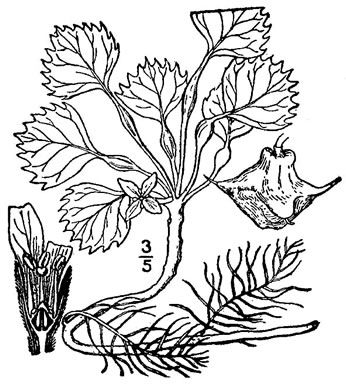Hovering over an image will enlarge it and point out features (works better on desktop than on mobile).
![]() A camera indicates there are pictures.
A camera indicates there are pictures.
![]() A speaker indicates that a botanical name is pronounced.
A speaker indicates that a botanical name is pronounced.
![]() A plus sign after a Latin name indicates that the species is further divided into varieties or subspecies.
A plus sign after a Latin name indicates that the species is further divided into varieties or subspecies.
Most habitat and range descriptions were obtained from Weakley's Flora.
Your search found 1 taxon in the family Trapaceae, Water Chestnut family, as understood by PLANTS National Database.

Common Name: European Water-chestnut, Water-caltrop, Four-spined Water-chestnut
Weakley's Flora: (4/24/22) Trapa natans FAMILY: Lythraceae
SYNONYMOUS WITH PLANTS National Database: Trapa natans FAMILY: Trapaceae
Habitat: Farm ponds and other stagnant or slow-moving water
Non-native: Eurasia & Africa
Your search found 1 taxon. You are on page PAGE 1 out of 1 pages.


